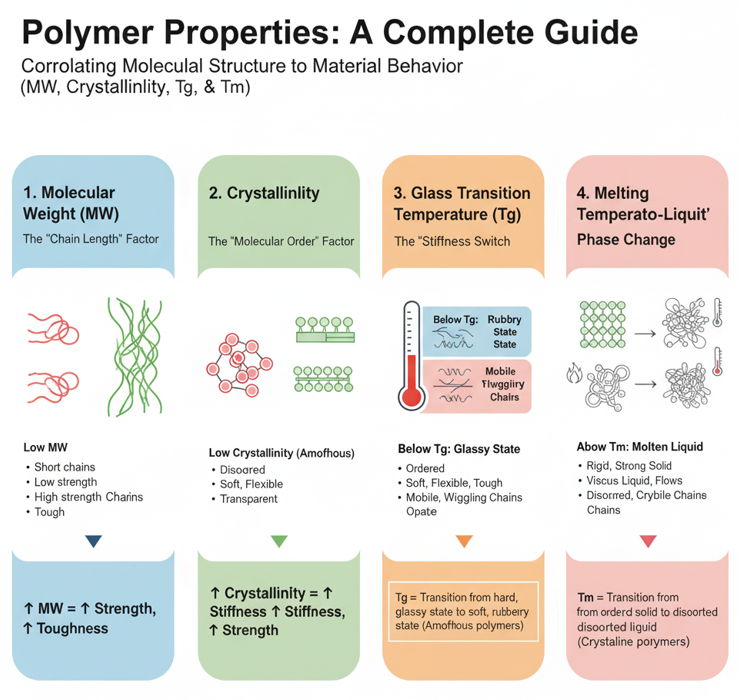Part 2: Polymer Solution and Solid Behavior Principles
Learning Objectives
By the end of this chapter, readers will gain a foundational understanding of:
- Polymer-solvent interactions and solution thermodynamics
- Chain conformation and molecular weight effects in solution
- Crystallinity, glass transition, and thermal behavior in solids
Polymers, due to their macromolecular nature, exhibit unique behaviors in both solution and solid states that differ significantly from small-molecule compounds. Understanding these behaviors is essential for designing and optimizing polymer-based materials for applications ranging from biomedical devices to industrial plastics.
This chapter explores the fundamental principles governing the behavior of polymers in solution and solid phases. In solution, polymers interact with solvents in complex ways that influence their conformation, viscosity, and thermodynamic properties. Key concepts such as solubility parameters, Flory-Huggins theory, and molecular weight effects are introduced to explain how polymers dissolve and behave in various solvents.
In the solid state, polymers can exist in amorphous, semi-crystalline, or fully crystalline forms, each with distinct mechanical and thermal properties. The chapter delves into the principles of glass transition, melting behavior, and viscoelasticity, providing insight into how polymer chains organize and respond to external forces.
The power of polymer-solvent interactions










